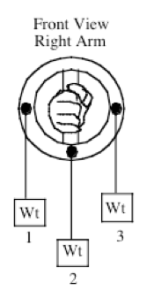In the last blog I talked about using NeuroKinetic Therapy to identify the causes of dysfunctional movement patterns. Again, it is of utmost importance to not only treat the symptoms of your client’s pain but also to unravel the complexities of those symptoms so that you can treat the causes. One of the most poorly diagnosed conditions is carpal tunnel syndrome. To simply state that the problem is solely in the wrist is to grossly overlook many contributing factors. Tight scalenes or subluxations of the cervical spine can also cause tingling or numbness in the hand. A tight pectoralis minor, which covers the brachial plexus, can also cause tingling and numbness in the hand. A client of mine, who was diagnosed with carpal tunnel syndrome, had been told by multiple hand surgeons that she needed a double carpal tunnel surgery. Starting at the neck, it quickly became obvious that some compression or nerve impingement in the cervical spine was causing the tingling and numbness in her hands. Her MRI showed a bulging disk between C-6 and C-7. She would have had a totally unnecessary surgery that would have compromised her career. It turns out that her posture while playing her instrument had caused her neck extensors to compensate for her latissimus dorsi. Years of doing that had compressed that disk. Once the latissimus dorsi were strengthened, the neck extensors relaxed and her symptoms improved dramatically.
Another client had been suffering from nerve pain in her right butt and leg for a few years. Her MRI revealed nothing wrong with her lumbar spine. She had received treatments from medical doctors, physical therapists, acupuncturists, and massage therapists with little or even disastrous results. She was told she did not have sciatica. Sciatica does not have to be caused by a bulging disk. It can also be caused by a compressed disk. What can cause a compressed disk? A hyperlordosis can be the result of a tight psoas. In this case, surgery to the abdominal area had caused scarring which had adhered to the psoas, causing it to severely tilt the pelvis anteriorly. The resultant compression on L-5,S-1, was causing the nerve impingement. Her psoas was not only tight but also tested weak. The muscles around L-5,S-1 were compensating for that weakness. Not only was the L-5,S-1 being compressed by a tight psoas, but also by a weak psoas. Treatment included strengthening and stretching the psoas.
Developing good assessment skills is essential in successfully treating complicated clients. Approaching each situation with an open mind and the ability to untangle difficult compensation patterns is crucial in attaining the results you and your clients desire. NeuroKinetic Therapy can be the key to achieving those results.


